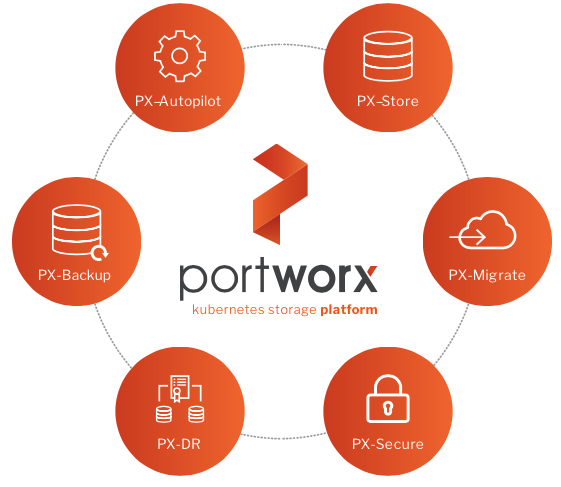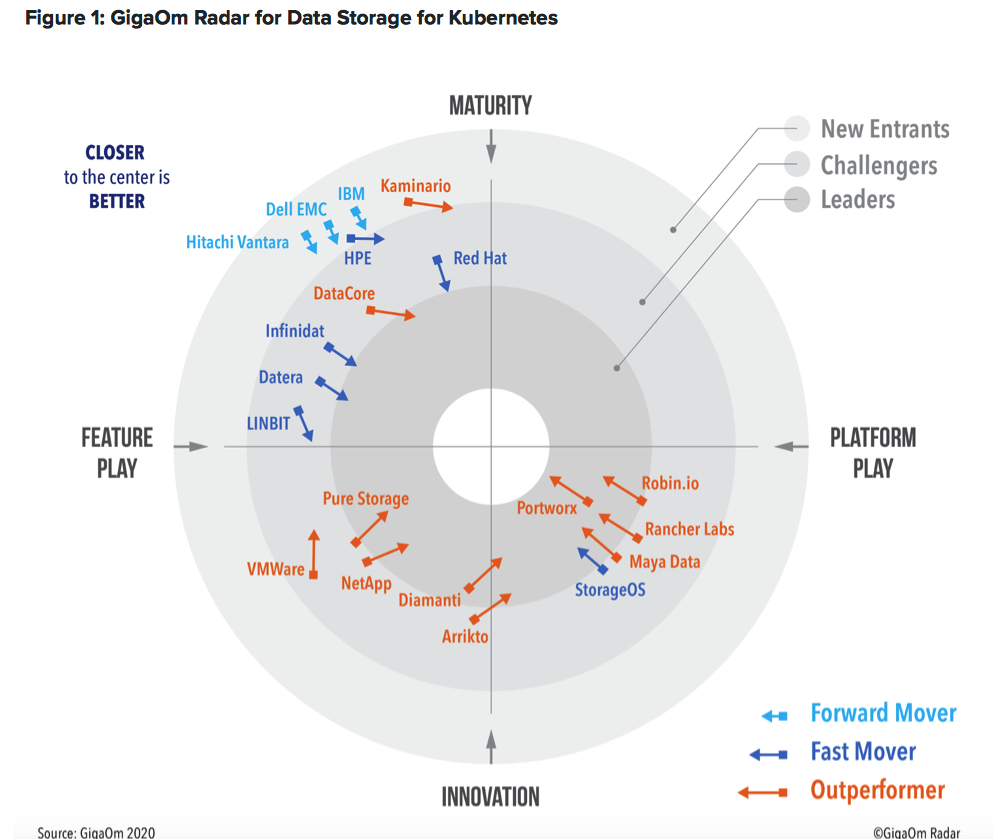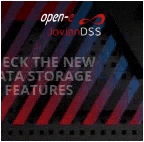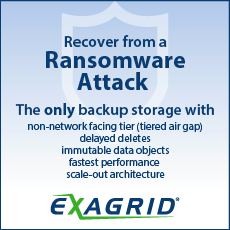Average Annual Recurring Revenue of Portworx Kubernetes Storage Platform Up 61% in 3 Quarters
With 26 customers having purchased $250,000 or more worth of licenses
This is a Press Release edited by StorageNewsletter.com on August 18, 2020 at 2:09 pmPortworx, Inc. completed its best quarter in both number of sales and total revenue as well as a major summer release of its Kubernetes storage platform to enable companies to run, scale, backup, and recover mission-critical applications on Kubernetes.

Serving many of the largest Kubernetes customers, the Storage Platform for Kubernetes ensures mission-critical Kubernetes applications are performant, protected and secure in multi- and hybrid-cloud environments.
This release provides firm’s growing list of Fortune 2000 customers with enhanced security, automation, and built-in data protection to easily deploy all of their mission-critical data services from a single platform.
As the Covid-19 crisis continues, enterprises are putting increased emphasis on accelerating digital transformation to combat slowdowns in other parts of their business or capture gains from shifting consumer patterns. Industry analysts validate this sentiment, with IDC projecting the DevOps software market will reach $15 billion by 2023.
There are an increasing number of container storage solutions on the market, however most require customers to cobble together disparate storage, backup and DR solutions to meet their application and scale requirements. This leaves customers with a Frankenstein-style stack for all their data needs, which is both inconsistent and unproven.
As provider of storage and data management solutions for the cloud-native enterprise, Portworx is solving this problem.
On July 31, it completed its strongest quarter in both number of sales and total value of sales, right off the heels of its previously record-setting Q1 2020.
More enterprises are purchasing the Kubernetes Storage Platform, which includes integrated storage, backup, DR, and security, and the average annual recurring revenue of those purchases has increased by 61% in three quarters, with 26 customers now having purchased $250,000 or more worth of licenses. One customer who purchased additional licenses in 2Q20 is now running Portworx Enterprise in production on over 1,500 nodes and 90 Kubernetes clusters. While all types of Kubernetes customers are purchasing Portworx, the company is seeing some its strongest growth come from OpenShift customers who are struggling to deploy enterprise applications on OpenShift without large scale storage and integrated backup and DR.
In one sale during 2Q20, a global financial institution purchased licenses for nearly $350,000 to provide storage, DR and capacity management in their OpenShift environment after they struggled to deploy enterprise applications using OpenShift alone.
Another global communications company purchased Portworx licenses for nearly $325,000 in 2Q20 to solve similar problems, including backup and recovery which they deemed an essential capability for applications running on OpenShift.
These purchases ensure that customers can expand their use of OpenShift, driving significant revenue opportunities not only for Portworx, but also the rest of the OpenShift and Kubernetes ecosystem. Portworx is a storage solution for Kubernetes trusted by the world’s largest enterprises, including Comcast, GE Digital, Lufthansa, T-Mobile, and Ford Motor company.

“Enterprises fueling their data transformation initiatives with Kubernetes cannot rely on traditional storage that fails to keep up with the scale and dynamism of Kubernetes environments, or cloud-native solutions that have yet to be proven at a global scale,” said Gou Rao, CTO and co-founder. “Only the Portworx Enterprise platform provides an enterprise solution for scalable, performant container storage, backup and DR, multi-cloud operations, data security, capacity management, and compliance and governance.”
“At Audi, we’ve explored different strategies for managing cloud costs, and the integration of Portworx as our Kubernetes storage platform has been successful in achieving this goal,” said Florian Buchmeier, DevOps engineer, Audi Business Innovation GmbH, a 100% subsidiary of Audi AG. “Portworx provides an enterprise alternative to the NAS storage commonly available on the cloud but at one third the price and substantially higher performance. Additionally, using the recently introduced PX-Autopilot to automatically provision storage only when it is needed, we are driving our cost savings even further.“
Portworx Enterprise 2.6
Leading Kubernetes storage platform, Portworx Enterprise 2.6 adds new features and updates to the large scale operation of Kubernetes environments. While not essential for smaller clusters of 10 or less nodes, larger clusters can impair performance of less rodbust Kubernetes storage platforms.
As such, Portworx recently added features such:
• Node capacity rebalancing – ensures no single node is allocated to full capacity when other nodes have space and are able to move replicas for a balanced state
• Improved performance for completeetcd loss – ensures that the Portworx storage cluster continues to operate as expected during temporary etcd outages.
• K3s support – k3s is a Kubernetes distribution for edge applications which often include hundreds or thousands of endpoints. Now the Portworx Storage Platform can be used with k3s clusters opening the door to the rapid growth of data services at the edge.
• Proxy Volumes
PX-Backup 1.1
The first significant update to PX-Backup brings streamlined support for recovery operations and user experience. The added depth of PX-Backup telemetry helps enterprises understand cluster environments, the number of backups they have, and the number of restores used across PX-Backup. Additionally, a new node based licensing plan and pay as you go options makes it easier for businesses to scale up and down as their data needs evolve.
Additional capabilities include:
• Granular restores – Added capability to selectively restore individual resource types from a backup instead of the entire application.
• Generic CRD support – Identify and support backups for any custom or generic CRDs.
• Support for namespace quotas – Application CPU, Memory and Storage Quotas can be applied at the namespace level, ensuring restored applications are placed on clusters with sufficient resources.
• Backup procedure metrics – New metrics like number of protected namespaces, size of backups and alert status for backups and restores.
• Default schedules – Allow admins to define policies that should be applied by default to namespaces or applications within their Kubernetes environments, including using wildcards to capture namespaces that have not yet been created.
PX-Autopilot for Capacity Management 1.3
Portworx previously announced PX-Autopilot for Capacity Management, enabling enterprises to cut their storage bills in half by automatically detecting when storage capacity is running low and provisioning more only when it’s needed. This update adds requested improvements in the form of GKE pool management support, auto pool rebalance, and GitOps based approval workflow, where an action like volume resize will require approval from designated users before action is taken. As enterprises seek to reduce cloud spend during Covid-19, these features are seeing increased demand.
Portworx Enterprise 2.6 will be available on August 24, PX-Autopilot 1.3 on August 31, PX-Backup 1.1 in Tech Preview on August 19.
The company also announced it has been certified on the Cloudera Data Platform (CDP).
Read also:
Exclusive Interview With Murli Thirumale, CEO of Portworx
Accelerating on container storage and Kubernetes
by Philippe Nicolas | March 18, 2020 | News














 Subscribe to our free daily newsletter
Subscribe to our free daily newsletter

